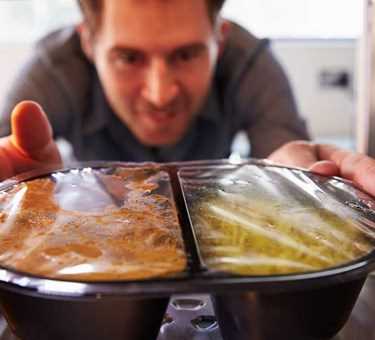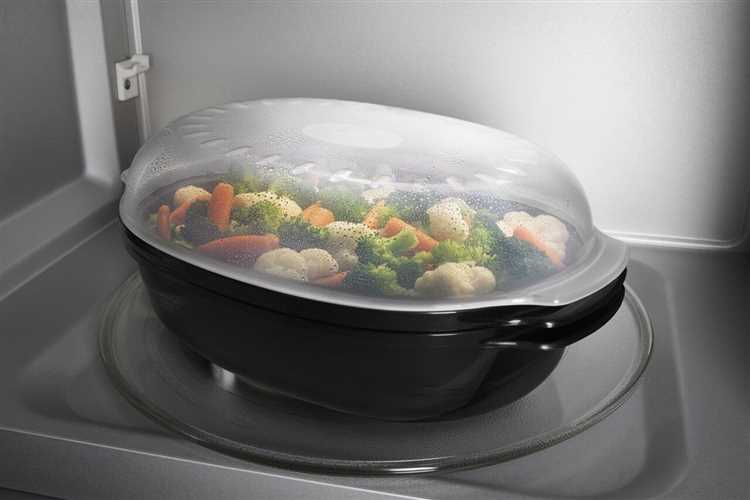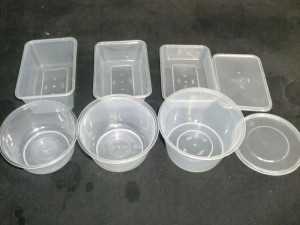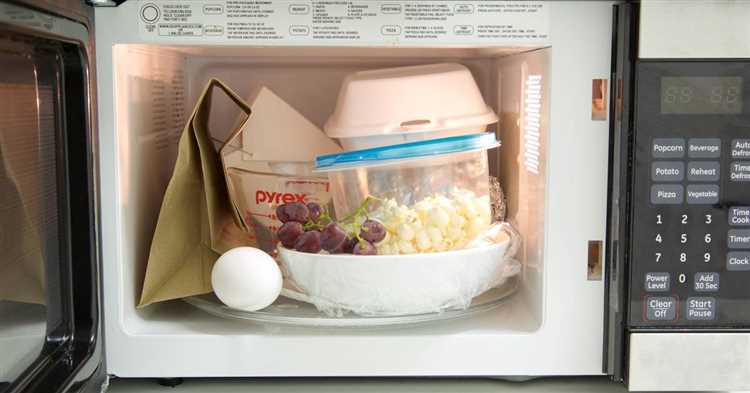
In today’s fast-paced world, the microwave has become an essential kitchen appliance for many households. It allows us to quickly heat up leftovers, defrost frozen food, and even cook entire meals in a matter of minutes. However, there has been an ongoing debate about the safety of microwaving plastic containers. Are the potential risks and health concerns justified, or are they simply a myth?
One of the main concerns surrounding microwaving plastic is the possibility of harmful chemicals leaching into our food. Many plastics contain additives such as phthalates and bisphenol A (BPA), which have been linked to various health issues, including hormone disruption and cancer. When exposed to high temperatures, these additives can migrate from the plastic into our food and ultimately into our bodies.
While it is true that some plastic containers are labeled as “microwave safe,” this does not guarantee their safety. The “microwave safe” label simply means that the container can withstand the heat generated by the microwave without melting or warping. It does not necessarily mean that the plastic won’t leach harmful chemicals into the food. Therefore, it is important to be cautious when microwaving plastic and to understand the potential risks involved.
To reduce the potential health risks, it is recommended to use microwave-safe glass or ceramic containers instead of plastic. These materials are less likely to leach harmful chemicals into the food when exposed to high temperatures. If using plastic containers is unavoidable, look for containers that are labeled as BPA-free and avoid using containers that are cracked or damaged, as they are more likely to release harmful chemicals during microwaving.
- Is Microwaving Plastic Safe?
- Potential Risks of Microwaving Plastic:
- Health Concerns:
- Understanding Potential Risks
- Plastic Types to Avoid
- Microwave Safe Plastics
- Alternative Options
- Potential Health Concerns
- Plastic Types and Safety
- Tips for Microwaving Plastic Safely
- Alternatives to Microwaving Plastic
- 1. Glass containers
- 2. Ceramic or porcelain dishes
- 3. Silicone containers
- 4. Stainless steel containers
- Q&A
- Can I safely microwave plastic containers?
- What happens when you microwave plastic containers?
- Is it safe to microwave plastic wrap?
- What are the health risks of microwaving plastic?
- Are there any safe alternatives to microwaving plastic?
- Is it safe to microwave plastic containers?
Is Microwaving Plastic Safe?

Microwaving plastic has been a common practice in many households for years. However, recent concern about the safety of microwaving plastic has raised questions about the potential risks and health concerns associated with this practice.
One of the main concerns is the potential for plastic to leach chemicals into food when microwaved. Some studies have shown that certain chemicals, such as bisphenol A (BPA) and phthalates, can migrate from plastic containers into the food when heated. These chemicals have been linked to various health issues, including hormone disruption and developmental problems.
While not all plastics contain BPA or phthalates, it can be difficult to determine which ones are safe for microwave use. Some plastic containers are labeled as “microwave-safe,” indicating that they are designed to withstand microwave heat without leaching harmful chemicals. However, even these containers may release small amounts of chemicals under certain conditions, such as when they are scratched or heated for an extended period of time.
Potential Risks of Microwaving Plastic:
1. Chemical leaching: Microwaving plastic can cause chemicals to leach into food, potentially leading to health issues over time.
2. Heat damage: Plastic containers may warp or melt when exposed to high heat, releasing harmful substances into the food.
3. Contamination: Using plastic containers that are not specifically designed for microwave use can result in contamination from chemicals or dyes used in the manufacturing process.
Health Concerns:
1. Hormone disruption: Chemicals like BPA and phthalates can disrupt the hormonal balance in the body, potentially leading to reproductive and developmental issues.
2. Cancer risk: There is some evidence to suggest that certain chemicals in plastic, such as styrene, may increase the risk of cancer when consumed over a long period of time.
3. Allergic reactions: Some individuals may be sensitive or allergic to certain chemicals found in plastic, resulting in allergic reactions when exposed to microwaved plastic.
It is important to note that more research is needed to fully understand the potential risks and long-term effects of microwaving plastic. In the meantime, it is recommended to use microwave-safe glass or ceramic containers as alternatives to plastic when possible. If using plastic containers, choose ones that are labeled as microwave-safe and avoid putting them in the dishwasher or using them to heat fatty or acidic foods, as these can increase the likelihood of chemical leaching.
Understanding Potential Risks
While microwaving plastic may seem convenient, it is important to understand the potential risks associated with this practice. While not all plastics are harmful when microwaved, it is essential to identify the types of plastic that should never be placed in a microwave.
Plastic Types to Avoid
It is crucial to avoid putting any plastic containers or items that are not labeled as microwave safe into the microwave. Some plastic containers may release harmful chemicals when heated, which can leach into your food and potentially pose health risks.
Plastics labeled with recycling codes #3 (PVC), #6 (PS), and #7 (other) are known to be potentially hazardous when heated. These plastics can release toxins like dioxins, styrene, and bisphenol A (BPA), which have been associated with various health problems such as hormone disruption, reproductive issues, and increased risk of cancer.
Microwave Safe Plastics
Not all plastics are unsafe for use in the microwave. Plastics labeled as microwave safe and made of high-density polyethylene (HDPE), low-density polyethylene (LDPE), polypropylene (PP), or polyethylene terephthalate (PET) are generally considered safe to use in the microwave.
However, even with microwave-safe plastics, it is essential to use caution and follow the manufacturer’s instructions. Over time, plastic containers can degrade and develop small cracks or scratches, which can harbor bacteria and chemicals. It is advisable to replace plastic containers if they show signs of damage or wear.
Alternative Options

If you are concerned about the potential risks associated with microwaving plastic, there are alternative options available.
- Use glass or ceramic containers labeled as microwave safe to heat food in the microwave. These materials are generally considered safe and do not release harmful chemicals when heated.
- Use microwave-safe covers or wraps made of paper towels, microwave-safe wax paper, or parchment paper to cover your food instead of plastic wrap or containers.
- Consider using heat-resistant silicone or stainless steel containers for microwaving food.
By being mindful of the types of plastics used in the microwave and considering alternative options, you can help reduce potential risks and promote a healthier lifestyle.
Potential Health Concerns
Microwaving plastics can potentially pose risks to your health. Here are some key considerations:
- Release of toxins: When certain types of plastic are heated in a microwave, they can release harmful chemicals into your food. This is especially true for plastics labeled with recycling codes 3, 6, and 7.
- BPA exposure: Bisphenol A (BPA) is a chemical commonly found in plastic containers. It has been linked to various health problems, including hormonal disruptions and an increased risk of certain diseases. Microwaving plastic containers that contain BPA can cause the chemical to leach into your food.
- Microwave-safe labels: While some plastic containers are labeled as microwave-safe, this label only guarantees that the container will not melt or warp in the microwave. It does not guarantee that the plastic won’t release harmful chemicals into your food.
- Heat stability: Not all plastics are heat-stable, meaning they can break down or warp when exposed to high temperatures. This can potentially lead to the release of harmful substances and compromise the safety of your food.
- Migration of chemicals: When you microwave plastic containers, chemicals can migrate from the container into your food. This migration is more likely to occur when the plastic is old or scratched, as these conditions can facilitate the release of chemicals.
Overall, it is important to be mindful of the potential health risks associated with microwaving plastic. Whenever possible, opt for microwave-safe glass or ceramic containers to minimize your exposure to harmful chemicals.
Plastic Types and Safety
Not all plastics are created equal when it comes to microwave safety. It is important to know the different types of plastics and their safety ratings.
1. Polyethylene (PE): This type of plastic is considered safe for microwave use. It is commonly used for food storage containers and plastic wrap. However, make sure the plastic is labeled as microwave-safe.
2. Polypropylene (PP): PP is another microwave-safe plastic that is commonly used for food containers, utensils, and microwave-safe plastic bags.
3. Polystyrene (PS): While PS is commonly used for disposable food containers and Styrofoam, it is not microwave-safe. Heating PS containers can cause them to release harmful chemicals into your food.
4. Polyvinyl Chloride (PVC): PVC is used in various household products but is not microwave-safe. It can release toxic chemicals when heated, so avoid using PVC containers in the microwave.
5. Polycarbonate (PC): PC is known for its durability and transparency, but it is not safe for microwave use. This plastic can release a harmful chemical called bisphenol A (BPA) when heated.
It is always important to check the labels on plastic containers to ensure they are labeled as microwave-safe. If a plastic container is not labeled, it is best to transfer the food to a microwave-safe glass or ceramic container before heating.
| Plastic Type | Microwave Safety Rating |
|---|---|
| Polyethylene (PE) | Safe |
| Polypropylene (PP) | Safe |
| Polystyrene (PS) | Not Safe |
| Polyvinyl Chloride (PVC) | Not Safe |
| Polycarbonate (PC) | Not Safe |
Always prioritize your safety when it comes to using plastics in the microwave. Using microwave-safe containers can help minimize the risk of harmful chemicals leaching into your food.
Tips for Microwaving Plastic Safely
While there are potential risks and health concerns associated with microwaving plastic, you can follow these tips to minimize these risks and use plastic safely in your microwave:
| 1. Check the label | Look for microwave-safe symbols or instructions on the plastic container’s label. This indicates that the container is deemed safe to use in the microwave. |
| 2. Use microwave-safe plastic | Choose plastic containers that are specifically designed for microwave use. These containers are usually labeled as microwave-safe and can withstand the heat generated by microwaving. |
| 3. Avoid using old or damaged plastic containers | Old or damaged plastic containers may leach harmful chemicals into your food when microwaved. It’s best to replace them with new microwave-safe containers. |
| 4. Avoid plastic wrap or plastic bags | Plastic wrap or plastic bags can release harmful chemicals when heated in the microwave. Use microwave-safe covers or lids instead. |
| 5. Keep plastic away from hot and fatty foods | Hot foods and fatty foods can cause plastic to melt or warp, potentially contaminating your food. Transfer hot or fatty foods to microwave-safe glass or ceramic containers instead. |
| 6. Check for microwave-safe symbols on plastic utensils | If you’re using plastic utensils in the microwave, ensure they are labeled as microwave-safe to avoid any potential health risks. |
| 7. Heat food in microwave-safe glass or ceramic containers | Glass or ceramic containers are generally considered safer for microwaving than plastic. If you have concerns about using plastic, opt for glass or ceramic containers instead. |
By following these tips, you can minimize the potential risks associated with microwaving plastic and ensure the safety of your food.
Alternatives to Microwaving Plastic
While microwaving plastic containers can pose potential risks to your health, there are several alternatives you can consider to heat or cook your food safely:
1. Glass containers
Glass containers are a great alternative to plastic when it comes to microwaving. They are microwave-safe, as long as they don’t have any metal parts, and do not release harmful chemicals into your food. Glass containers also do not absorb odors or stains, making them easy to clean and reuse.
2. Ceramic or porcelain dishes
Ceramic or porcelain dishes are another safe option for microwaving. Just make sure they do not have any metallic accents or designs. These materials are heat-resistant and do not leach chemicals into your food. They are also easy to clean and can add a touch of elegance to your meals.
3. Silicone containers

Silicone containers have gained popularity as a non-toxic alternative to plastic. They are safe for microwave use and can withstand high temperatures without releasing harmful substances. Silicone containers are also flexible, lightweight, and easy to clean.
4. Stainless steel containers
Stainless steel containers are a durable and safe option for microwaving. They do not leach chemicals into your food, even at high temperatures. Look for containers that are specifically labeled as microwave-safe. Stainless steel containers are also a sustainable choice, as they are long-lasting and can be easily recycled.
Remember, always check the labeling of your containers to ensure they are microwave-safe before using them. Avoid using containers that are cracked, warped, or discolored, as they may release harmful chemicals when heated.
By choosing these alternatives, you can minimize your exposure to potential health risks associated with microwaving plastic without compromising the convenience of using a microwave.
Q&A
Can I safely microwave plastic containers?
It depends on the type of plastic. Some plastics, like microwave-safe PETE or microwave-safe HDPE, are specifically designed to withstand high temperatures. However, many other plastics can release harmful chemicals when heated, so it’s important to check the plastic’s microwave-safe label before using it.
What happens when you microwave plastic containers?
When you microwave plastic containers, there is a risk of chemicals leaching into your food. The heat from the microwave can cause the plastic to break down, releasing harmful substances like BPA, phthalates, and styrene into your food or the surrounding air. These chemicals have been linked to various health issues.
Is it safe to microwave plastic wrap?
No, it is generally not safe to microwave plastic wrap. Most plastic wraps are not designed for high temperatures and can melt or release harmful chemicals when exposed to heat. Instead, it is recommended to use microwave-safe glass containers or paper towels to cover your food when microwaving.
What are the health risks of microwaving plastic?
Microwaving plastic can expose you to harmful chemicals that may have adverse effects on your health. These chemicals, such as BPA, phthalates, and styrene, have been linked to various health issues including hormone disruption, developmental problems, and an increased risk of certain cancers. It is best to avoid microwaving plastic whenever possible to reduce these health risks.
Are there any safe alternatives to microwaving plastic?
Yes, there are safe alternatives to microwaving plastic. You can use microwave-safe glass or ceramic containers, which are designed to withstand high temperatures. Additionally, you can cover your food with microwave-safe paper towels or use microwave-safe silicone lids or wraps. These alternatives do not release harmful chemicals like many plastics do.
Is it safe to microwave plastic containers?
It depends on the type of plastic. Microwave-safe plastic containers are labeled with a symbol that looks like a wavy line or a microwave with “safe for microwave” written underneath. These containers are designed to withstand high temperatures without releasing harmful chemicals into the food.